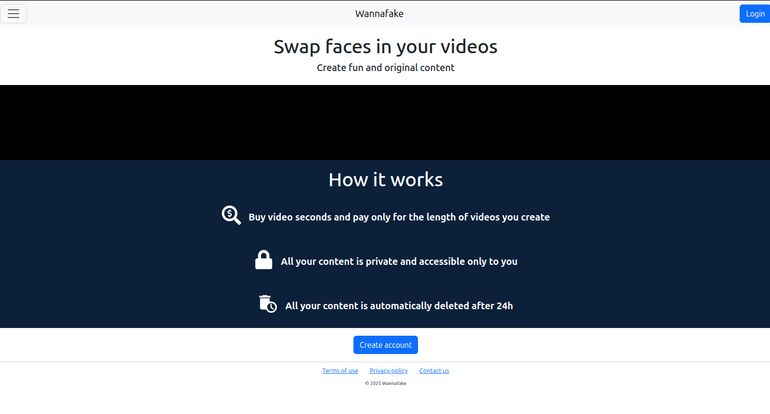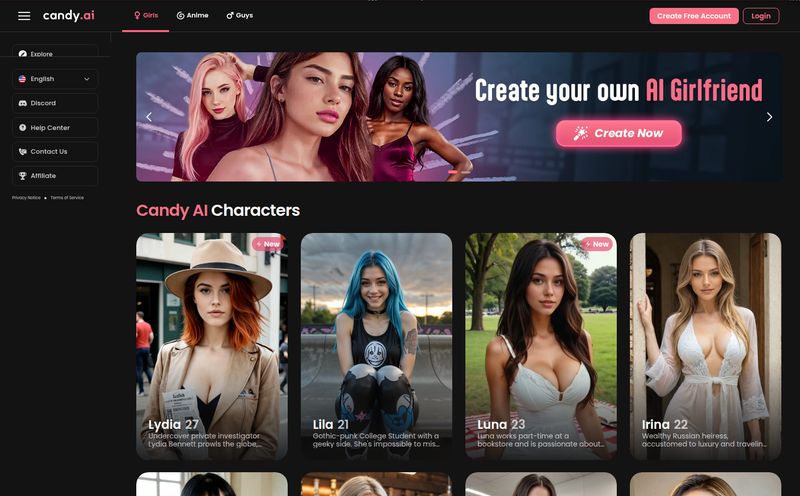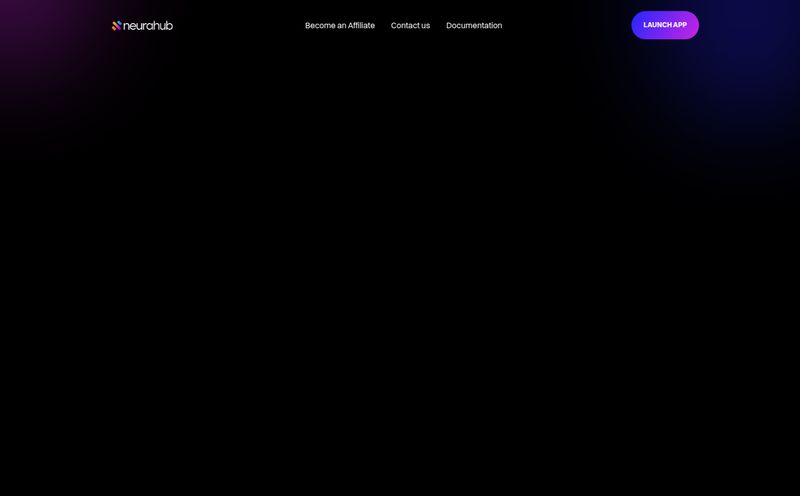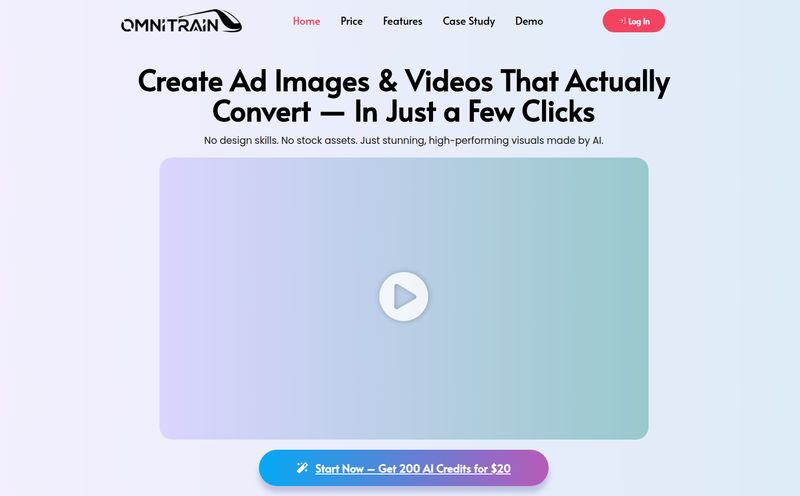My credit card statement is basically a graveyard of forgotten SaaS subscriptions. That SEO tool I used once? Still paying. The video editor with a million features I never touch? Yep, that one too. It feels like every cool new tool wants to lock you into a monthly fee, and frankly, I'm over it.
So, when I stumbled upon a tool called Wannafake, the first thing that caught my eye wasn't the tech—it was the business model. No subscriptions. Pay only for what you actually use. It sounded… suspiciously fair. Could this be the antidote to the subscription fatigue plaguing every content creator and marketer out there? I had to find out.
What Exactly is Wannafake?
At its core, Wannafake is a dead-simple tool for doing one thing: swapping a face from a photo onto a person in a video. That's it. It’s not trying to be a full-blown video editing suite or a complex AI film studio. It's a specialized tool designed to create fun, original, and often hilarious content without the steep learning curve.
You upload a source video, you upload a single clear photo of the face you want to use, and the platform does the heavy lifting. The result is a 'deepfake' style video, perfect for memes, personalized social media clips, or just having a laugh with your team. The whole process is designed to be quick and painless.
Breaking Down the Wannafake Experience
Getting started is straightforward. The website is minimalist, almost to a fault. There’s no fluff, no endless marketing pages—just a clear explanation of how it works. You create an account and you're pretty much ready to go. But the real magic is in the details of their approach.
The Pay-As-You-Go Model is a Breath of Fresh Air
This is the feature that deserves its own parade. Instead of a monthly fee, you buy 'video seconds' as a credit. Think of it like an arcade. You buy a pocketful of tokens (seconds) and then spend them only on the games (videos) you want to play. If you don't create anything for three months, you haven't wasted a dime on a subscription. It’s a model built on trust, assuming you'll come back when you need it, rather than just hoping you forget to cancel.
I’ve always felt that the standard SaaS model is like a gym membership that banks on you not showing up. Wannafake is more like a pay-per-class yoga studio. You only pay for the value you actually recieve. It's a subtle but powerful shift that puts the user back in control of their budget.
Privacy First... and Fast Deletion
Okay, this part is huge. In an age where we're all (rightfully) a bit paranoid about our data and what AI companies are doing with it, Wannafake's policy is a standout. According to their site, all your content is automatically and permanently deleted after 24 hours. Your uploads, your creations—poof, gone. It's private and accessible only to you during that window.
This isn't just a feature; it's a statement. It tells me they aren't interested in hoarding my data to train their models or sell to third parties. They're providing a service, and once that service is rendered, the transaction is over. For anyone creating content with client faces or just wanting to keep their meme-making hobby private, this is a massive plus.

Visit Wannafake
Handy Features for Busy Creators
Beyond the big-picture stuff, there are a couple of smart, practical features built in. My favorite is the video clipping tool. You can upload a 5-minute video, but if you only need a 10-second clip from the middle, you can trim it right there in the interface. And here's the kicker: you only pay for the 10 seconds you actually process. It's another small way they reinforce that 'pay for what you use' ethos.
They also mention that you can create multiple videos in parallel. For a social media manager trying to pump out a few different versions of a trending meme for A/B testing, this is a serious time-saver. No more waiting for one video to render before you can start the next. It’s a workflow-aware feature that shows they understand their target user.
My Honest Take: The Good and The Not-So-Good
So, is it perfect? Of course not, nothing ever is. The simplicity is its greatest strength but also leads to some of its limitations. The tool is highly specialized. If you want to add text overlays, music, or fancy transitions, you’ll need to export your Wannafake clip and pop it into another video editor. This is purely a face-swapping engine.
On the downside, the platform requires JavaScript to run, which is standard for most web apps today but could be a hurdle for a tiny fraction of users with high-security browser settings. Also, the model of buying seconds, while fair, does mean you have to pony up some cash upfront before you can create anything. There doesn't appear to be a free trial or a few complimentary seconds to test the waters, which might make some people hesitate. I also ran into a 'Not found' page once while clicking around, which suggests the site might have a few minor bugs to iron out—nothing a quick refresh couldn't fix, though.
Who Should Actually Use Wannafake?
This tool isn't for Hollywood VFX artists, but it's perfect for a few key groups:
- Social Media Managers & Marketers: Need to quickly jump on a trend? Want to create a funny, personalized video for your brand's TikTok or Instagram Reels? This is a fast way to do it without a major production budget.
- Meme Creators & Content Hobbyists: If you're the person in your friend group who's always making hilarious custom GIFs and videos, this tool was practically made for you. The pay-as-you-go model is ideal for infrequent but inspired bursts of creativity.
- Small Businesses & Startups: Perfect for making fun internal videos, personalized sales outreach, or quirky marketing materials without commiting to another monthly software expense.
Essentially, if you need high-quality face swaps without the financial commitment or technical overhead, Wannafake is a compelling option.
Frequently Asked Questions about Wannafake
How does Wannafake's pricing work?
It's a pay-as-you-go system. You don't pay a monthly subscription. Instead, you buy a bundle of 'seconds' as credit. You then use these credits to pay for the exact length of the videos you create.
Is Wannafake safe to use for my videos?
Privacy seems to be a top priority. The platform states that all uploaded content and created videos are private and automatically deleted from their servers after 24 hours. This is a significant step towards ensuring user data security.
Do I need any special technical skills?
Not at all. The interface is designed to be extremely simple. If you can upload a photo and a video to a social media site, you have all the skills you need to use Wannafake.
Can I edit my video after the face swap?
Wannafake only handles the face swapping. It does have a built-in tool to clip your video's length before processing, but for adding things like text, music, or other effects, you'll need to use a separate video editing program.
Is there really no subscription option?
Nope. As of my review, the entire model is built around paying for what you use. This is their main differentiator in a market saturated with subscriptions.
My Final Verdict
In a world of bloated software and relentless subscription pushes, Wannafake is refreshingly straightforward. It knows exactly what it is—a simple, effective face swap tool—and it doesn’t try to be anything else. The combination of a fair pay-as-you-go model and a strong stance on privacy makes it an easy tool for me to get behind.
It's not going to be the right fit for everyone, especially those needing an all-in-one production studio. But for the vast majority of creators and marketers who just want to make cool, funny stuff quickly and affordably, Wannafake is a fantastic and much-needed option in the market. It’s a tool that respects both your wallet and your privacy, and in 2023, that's a pretty powerful combination.
References and Sources
For more reading on the business models discussed in this article, you can check out these resources:
- The Subscription Economy Index - An overview of the growth of subscription-based business models.
- WIRED: What Is a Deepfake? - A primer on the technology behind face swapping and its implications.



